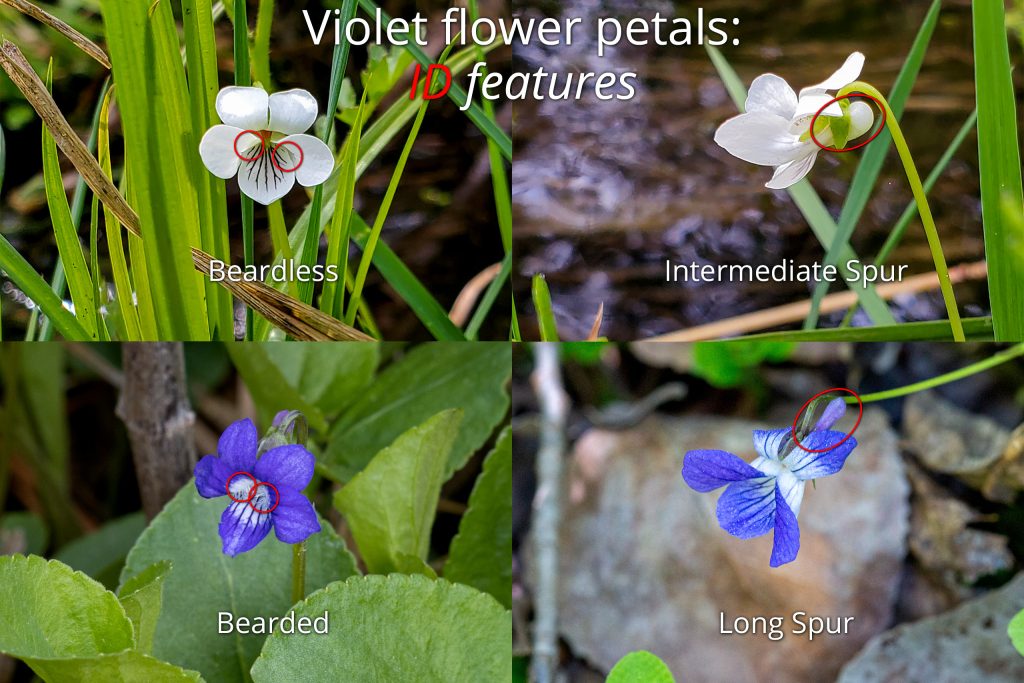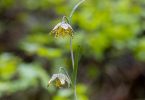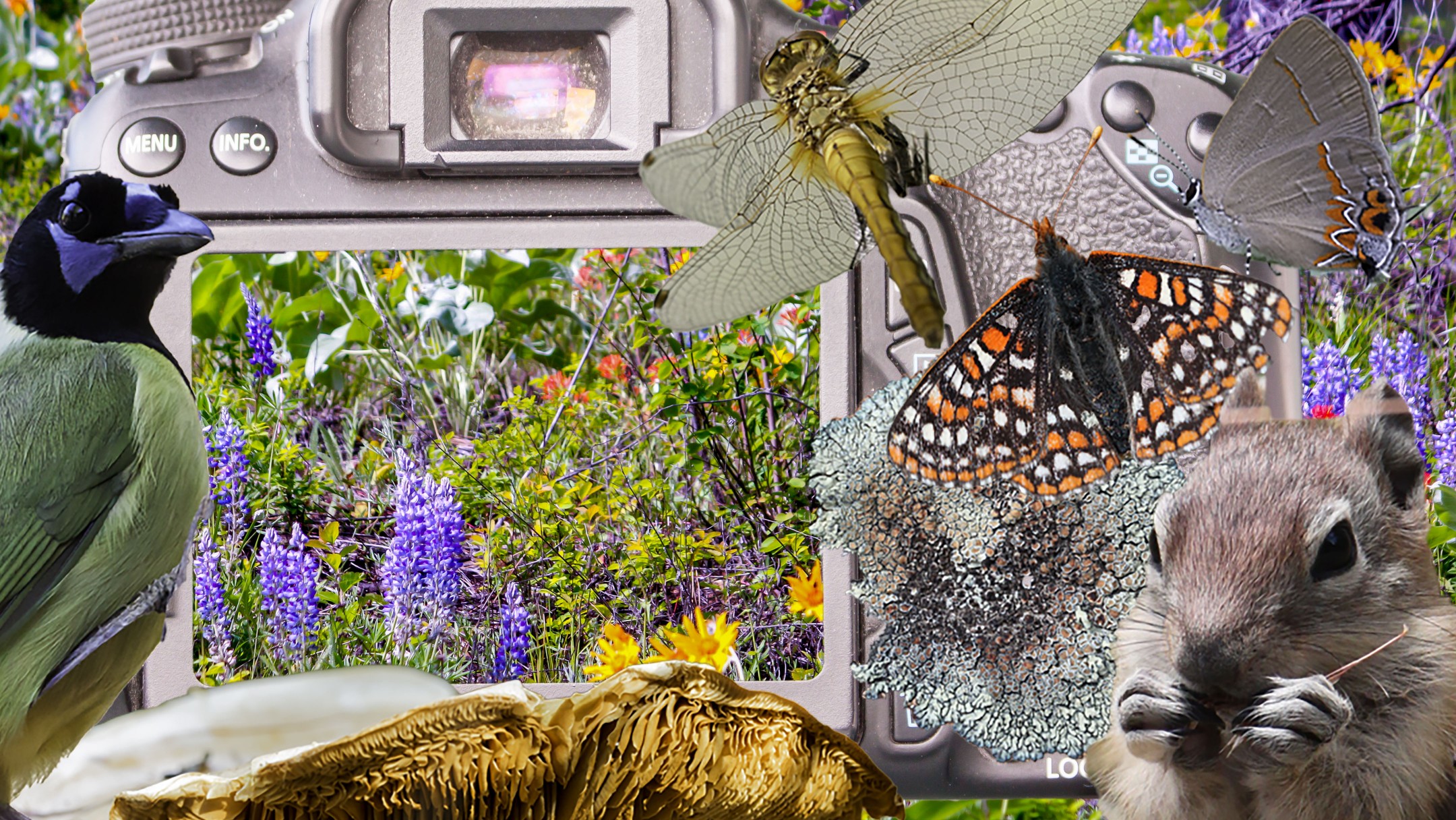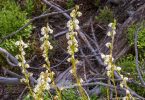Pictured below are images for six native species of Violet wildflowers (Viola sp.) photographed from western Montana (Bitterroot Valley). In general, these plants are small (2 – 6” tall) ergo somewhat hidden by neighboring vegetation. Late April, early May typically is the period for initial blooming before the bulk of other wildflower species color the landscape. Flower color, pattern and form are three factors in determining species identity. The photos below will introduce you to: three yellow flowered violets (Nuttall’s [V. nuttallii], Roundleaf [V. orbiculata] and Smooth Yellow Woodland [V. glabella]); two white colored ones (Marsh [V. palustris] and Smooth White [V. macloskeyi]) and one blue species (Sand [V. adunca]).
Flowers – key field marks for ID
Flowers consist of five petals, zygomorphic (mirrored images on vertical axis) in form. One petal on each side, two petals on top and a single petal on the bottom. The bottom petal a) extends to the rear forming a pouch or spur and b) has a series of purple lines (about 5 or 6 from front to back). The lines are theorized to direct pollinators to the nectar in the spur. Sand Violet has the longest spur averaging 6 mm in length. Yellow flowered violets have the shortest spurs less than 2mm in length. White flowered violets have spurs intermediate in length. Another identification factor is the presence or absence of stiff hairs at or near the base of the side petals, commonly referred to as “beards”. Photo directly below illustrates.

I-did-not-know Sidebar
Many violets have small, hidden cleistogamous flowers at the base of plants. They don’t open and self-fertilize. Seeds produced this way typically have an elaiosome (fatty appendage) attached that is attractive to ants. As such, ants carry the seed back to the nest, consume the fatty tissue and dispose of the remaining seed…basically planting it. Technical name for this process is myrmecochory.
Violet Wildflowers Diversity and Distribution
Lackschewitz (1991) lists nine violet species occurring in west-central Montana. For the state as a whole twelve species have been documented (Lesica 2012). Nationally, Brandenburg (2010) outlined 64 native species in the Viola genus. Worldwide there are somewhere between 500 and 600 Viola species (Wikipedia).
References
Brandenburg, D. M. (2010). Field Guide to Wildflowers of North America. New York,
New York: Andrew Stewart Publishing, Inc.
Lesica, P. (2012). Manual of Montana Vascular Plants. Fort Worth, Texas: Botanical Research Institute of Texas.
Lackschewitz, K. (1991). Vascular Plants of West-Central Montana-Identification Guidebook. Ogden, Utah: USDA Intermountain Research Station.













Lovely wildflowers, Bob. I find wildflowers to be more full of patterns and colors. Tiny ethereal beauties. Thanks for sharing
I am inspired to put together some I have clicked …. maybe soon.
Hello Monika, I appreciate your thoughts and comments. Glad to read that you are inspired and that you will post some of your wildflower photos. Most importantly, hope you are just outside taking it all in…yep, “tiny ethereal beauties” 🙂